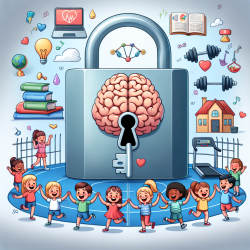As a speech-language pathologist dedicated to data-driven decisions, I am excited to share insights from the research article titled "Promoting Social Engagement With a Multi-Role Dancing Robot for In-Home Autism Care" by Javed and Park. This research explores the innovative use of a dancing robot to enhance social engagement in children with autism, offering practical applications for practitioners aiming to improve their therapeutic approaches.
The study employs a bipedal humanoid robot that interacts with children through dance, assuming both leader and follower roles. The robot's leader role involves initiating dance sequences using a trained sequence-to-sequence (S2S) Long Short-Term Memory (LSTM) network, while the follower role involves mimicking the child's movements in real-time. This dual-role interaction model aims to foster physical activity and social engagement among children with autism.
Key findings from the research include:
- The robot's leader role, driven by music, was more effective in engaging children compared to the follower role.
- Both roles were successful in promoting high levels of physical activity, a critical factor in improving psychological well-being and social skills in children with autism.
- The mixed-role interaction, although not statistically significant due to the small sample size, showed promising trends in increasing emotional, attentional, and task engagement.
For practitioners, these findings highlight the potential benefits of incorporating socially assistive robots (SARs) into therapy sessions. Here are some practical steps to implement these insights:
- Incorporate Music and Dance: Utilize familiar and upbeat music to initiate dance activities, encouraging children to follow along and mimic movements.
- Leverage Mixed-Role Interactions: Alternate between leader and follower roles to maintain engagement and provide opportunities for children to both learn from and teach the robot.
- Monitor Engagement Levels: Use behavioral cues such as facial expressions and physical activity to assess and adapt the interaction, ensuring it remains engaging and beneficial.
- Engage Parents: Encourage parental involvement to create a supportive environment and reinforce positive behaviors during and after the sessions.
In conclusion, the use of multi-role dancing robots presents a promising avenue for enhancing social engagement and physical activity in children with autism. Practitioners are encouraged to explore these innovative methods and consider further research to fully understand and optimize the benefits of SARs in autism care.
To read the original research paper, please follow this link: Promoting Social Engagement With a Multi-Role Dancing Robot for In-Home Autism Care.










